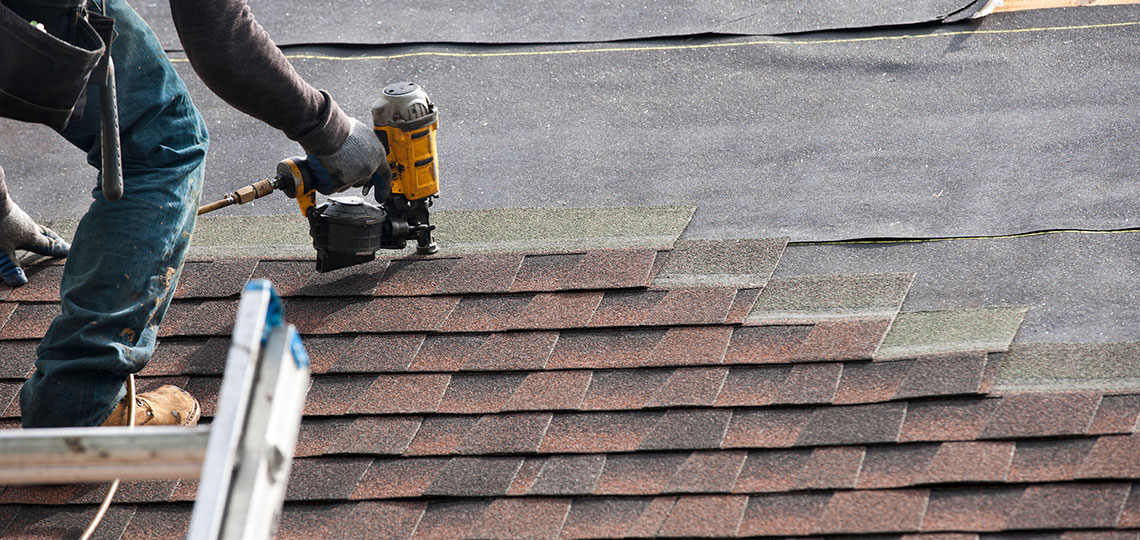The Significance of Choosing Skilled Roofing Companies Gainesville Florida
The Significance of Choosing Skilled Roofing Companies Gainesville Florida
Blog Article
Best Practices for Ensuring Correct Roof Covering Ventilation
Guaranteeing proper roof air flow is essential for the long life and effectiveness of a roof covering system. A well balanced intake and exhaust vent proportion, typically 1:300, plays a pivotal duty, with intake vents ideally positioned at the lower side of the roofing for amazing air access and exhaust vents at the top for cozy air leave. Regular inspections to recognize blockages and preserve clear air movement are paramount. Maintaining insulation away from vents is vital to stop airflow constraint. Comprehending these foundational elements establishes the phase for more comprehensive understandings into installment and maintenance techniques that can dramatically boost your roofing system's efficiency.
Understand Ventilation Basics
Properly recognizing ventilation basics is crucial for making sure the long life and efficiency of roof covering systems. Effective ventilation alleviates wetness build-up and temperature level extremes in the attic room, both of which can cause substantial architectural damages over time. A well-ventilated roofing system aids in avoiding typical problems such as mold development, timber rot, and ice dams, which can compromise the honesty of the roof covering materials and the underlying structures.
The primary goal of air flow is to promote the motion of air, permitting a constant exchange between the interior and outside atmospheres. This balance is accomplished through a combination of intake and exhaust vents that interact to keep ideal airflow. Consumption vents, commonly situated along the eaves or soffits, permit fresh air to go into the attic area, while exhaust vents, typically located at or near the roofing system ridge, make it possible for hot, humid air to run away.
Trick elements influencing the performance of roofing system air flow include proper positioning, sufficient sizing, and ensuring that both consumption and exhaust vents are unhampered. Regular examination and maintenance are vital to identify possible blockages, damage, or inefficiencies in the air flow system, therefore protecting the roof's efficiency and resilience.
Types of Roof Vents
Roof covering vents play an important duty in preserving reliable attic ventilation and, by expansion, the overall health and wellness of the roof covering system. Numerous kinds of roofing system vents are offered, each with distinct advantages customized to specific roofing needs.

Soffit vents are installed under the eaves and job in tandem with roofing system vents to guarantee a balanced consumption and exhaust system. By allowing cooler air to get in from below, soffit vents facilitate the expulsion of warm air via top vents. Gable vents, situated on the outside walls of the attic, offer one more reliable option, especially in homes with gable roofs.
Examine Your Existing Air Flow

Following, consider the age and problem of your roof materials and ventilation elements. Older systems may not follow present structure codes or may have worn away gradually, reducing their efficiency. Conduct a thorough exam to recognize any kind of indications of wear and tear, such as corrosion, damages, or gaps that can jeopardize the system's efficiency.
In addition, determine the attic room temperature level and moisture levels. High temperature levels and moisture can suggest inadequate ventilation - gainesville fl roofing companies. Use a hygrometer and thermostat to acquire exact analyses, contrasting them with outdoor problems. Relentless inconsistencies suggest possible issues that require attending to.
Installment Best Practices
Effective setup of roof covering air flow systems is paramount for making sure ideal efficiency and longevity. Proper installment starts with recognizing the specific air flow demands of the roof and the building it covers. This includes computing the correct proportion of intake to exhaust vents, normally sticking to the 1:300 guideline, which specifies one square foot of ventilation for every 300 square feet of attic flooring room.

The placement of vents is just as crucial. Consumption vents should be installed at the roofing system's lower side, often in the soffits, to allow cool air to go into. Exhaust vents, on the various other hand, ought to be set up near or at the roof's peak to promote the exit of warm, damp air. This develops an all-natural air movement that helps preserve temperature level and moisture equilibrium within the attic area.
Seal all air vent connections thoroughly to protect against air leakages and potential water infiltration. Use high-grade products and adhere to manufacturer guidelines to guarantee sturdiness and performance. In addition, integrating ridge vents with baffles can significantly boost air movement performance by preventing wind-driven rainfall and snow from entering the attic.
Ultimately, precise installment of roof covering air flow systems mitigates potential concerns such as mold and mildew development, ice dams, and architectural damages, guaranteeing the roofing system's stability and the building's general health.
Routine Maintenance Tips
Consistency in maintenance additional hints methods is essential to guaranteeing the long-lasting performance of roof covering air flow systems. Routine evaluations are critical, preferably done biannually-- in the spring and autumn. During these evaluations, ensure that vents are totally free of particles, nests, and various other obstructions that could hamper airflow. Look for any kind of indications of moisture build-up or mold, as these can show inappropriate ventilation or leaks (gainesville fl roofing companies).
Cleansing the vents is one more article source essential task. Use a soft brush or a vacuum cleaner to eliminate dust and debris from consumption and exhaust vents. Beware not to harm the air vent screens or louvers throughout the procedure. Additionally, check the attic area for any indications of water damages, which could endanger the integrity of the roof.
Proper insulation is similarly important. Make sure that attic room insulation does not block the vents, as this can badly limit airflow. If any type of insulation has actually shifted or cleared up, rearrange or replace it to maintain an efficient obstacle.
Finally, change any kind of harmed or missing elements quickly. Damaged vents, fractured tiles, or shabby flashing can all add to insufficient ventilation and needs to be attended to right away. Normal upkeep makes sure that the roofing ventilation system functions efficiently, thereby extending the lifespan of the roofing system itself.
Final Thought
Ensuring correct roofing air flow is vital for maintaining the performance and toughness of a roof system. Adherence to the 1:300 intake and exhaust air vent ratio, paired with the critical placement of vents, is crucial.
A balanced consumption and exhaust air vent proportion, typically 1:300, plays a crucial role, with consumption vents ideally put at the reduced side of the roofing for awesome air access and exhaust vents at the peak for cozy air leave. Intake vents, normally situated along the eaves or soffits, allow Homepage fresh air to enter the attic area, while exhaust vents, often positioned at or near the roofing ridge, make it possible for hot, damp air to escape.
Soffit vents are mounted under the eaves and work in tandem with roofing system vents to make sure a balanced consumption and exhaust system. By allowing cooler air to enter from below, soffit vents assist in the expulsion of warm air via upper vents. Adherence to the 1:300 intake and exhaust vent proportion, paired with the tactical placement of vents, is necessary.
Report this page